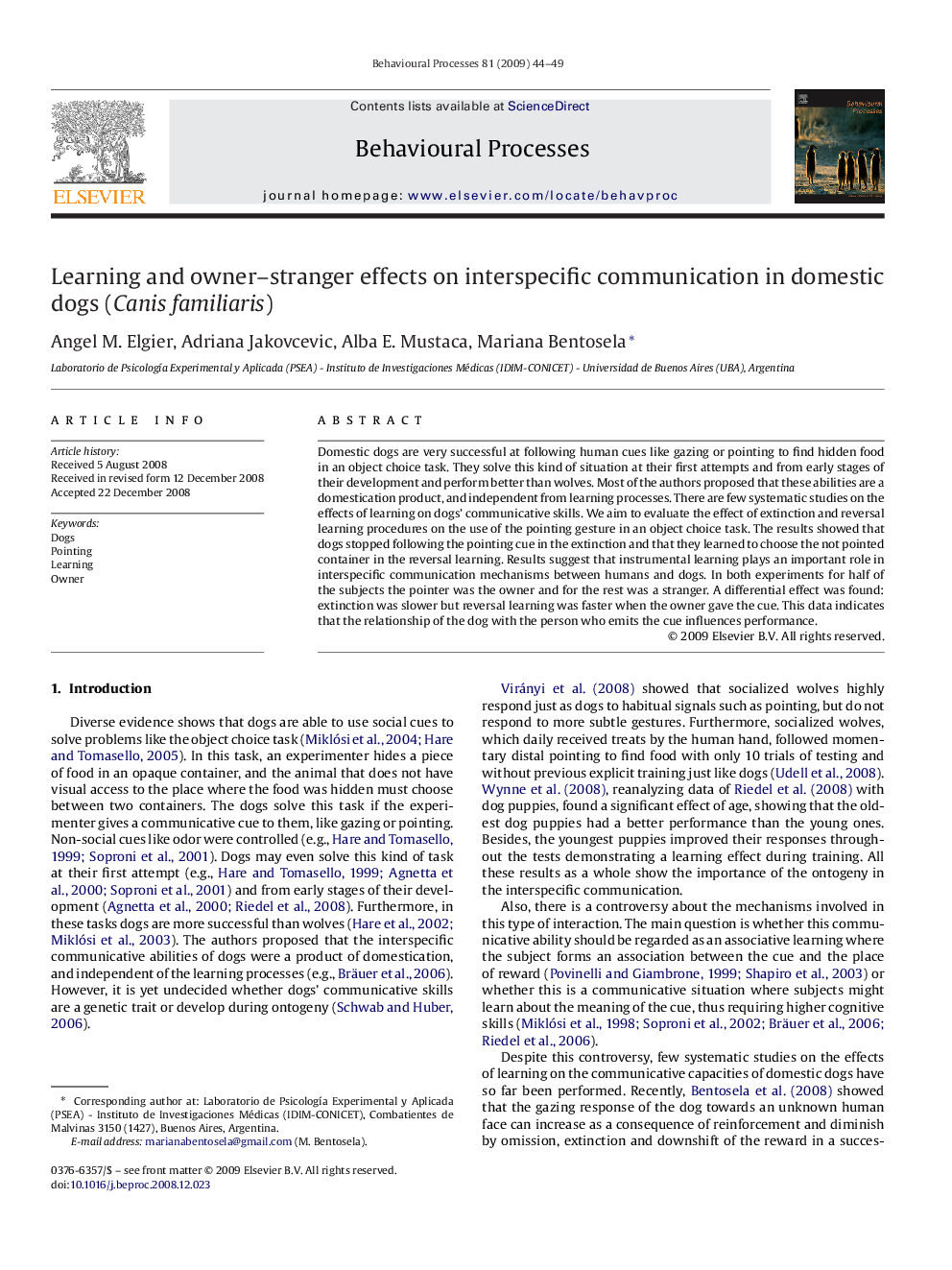| Article ID | Journal | Published Year | Pages | File Type |
|---|---|---|---|---|
| 2427545 | Behavioural Processes | 2009 | 6 Pages |
Domestic dogs are very successful at following human cues like gazing or pointing to find hidden food in an object choice task. They solve this kind of situation at their first attempts and from early stages of their development and perform better than wolves. Most of the authors proposed that these abilities are a domestication product, and independent from learning processes. There are few systematic studies on the effects of learning on dogs’ communicative skills. We aim to evaluate the effect of extinction and reversal learning procedures on the use of the pointing gesture in an object choice task. The results showed that dogs stopped following the pointing cue in the extinction and that they learned to choose the not pointed container in the reversal learning. Results suggest that instrumental learning plays an important role in interspecific communication mechanisms between humans and dogs. In both experiments for half of the subjects the pointer was the owner and for the rest was a stranger. A differential effect was found: extinction was slower but reversal learning was faster when the owner gave the cue. This data indicates that the relationship of the dog with the person who emits the cue influences performance.
